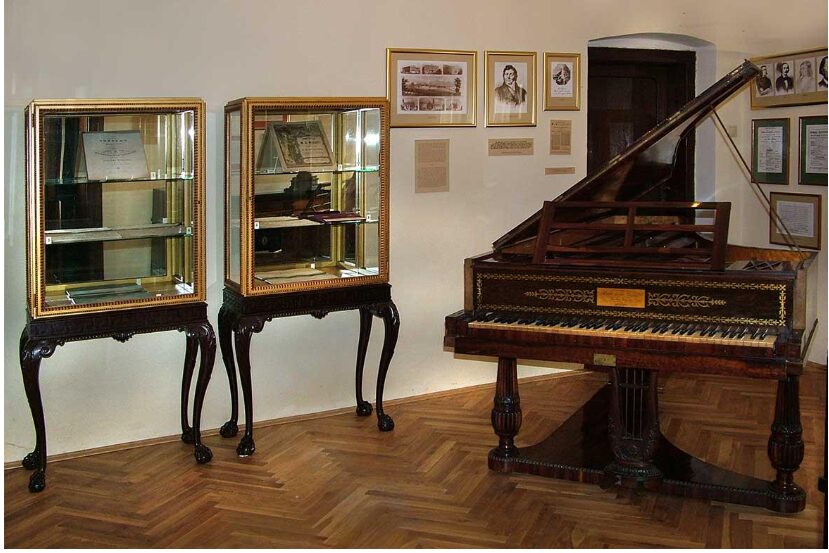This exhibition dedicated to the life and work of the renowned Bratislava-born composer Johann Nepomuk Hummel (1778–1837) is housed in a charming Renaissance-style house. It offers insight into the composer’s legacy, showcasing his contributions to classical music and his connection to the city’s cultural heritage.
Johann Nepomuk Hummel (1778–1837) was one of the most important European composers, piano virtuosos, and music educators at the turn of the 18th and 19th centuries.
He was born on November 14, 1778, in Bratislava, the son of Johann Nepomuk Hummel Sr., a member of Count Grassalkovich’s orchestra and conductor of a theatre troupe. In 1786, the family moved to Vienna.
The exhibition is located in the garden house where the composer was born. Today, the house sits in the courtyard of a Neo-Baroque apartment building from 1910. The original house was built in the 17th century, and in 1755, two open staircases with loggias were added on either side. In 1909, a Baroque relief titled Coronation of the Virgin Mary (mid-18th century) was installed on the façade. This piece came from an older, demolished building.
In 1937, on the centenary of Hummel’s death, the city established a museum in the house. The exhibition has been reinstalled several times, with the most recent version marking the 170th anniversary of his death.
The exhibition provides insight into the life of Hummel’s family, his youth, and education. He was a student of W. A. Mozart and, like Mozart, toured European cities as a child prodigy alongside his father.
After moving to Vienna, Hummel studied under notable musicians such as Albrechtsberger, Salieri, and Haydn. He later worked as a composer, conductor, and teacher in Eisenstadt, Stuttgart, and Weimar. His progressive teaching methods were published in his famous work, A Complete Theoretical and Practical Course of Instruction on the Art of Playing the Piano Forte.
The exhibition also highlights Hummel’s connection to his hometown and his relationships with key cultural figures through concert tours. This is illustrated through reproductions of period graphics and archival documents.
Among the most precious items on display are a piano and two spinets that Hummel once played. The interior also features his writing desk, death mask, a model of his Weimar monument, and a miniature of the Bratislava monument created by goldsmith M. Weinstabl.
The monument to Hummel in Bratislava, now located on Hviezdoslav Square, was created in 1887 by sculptor Viktor Tilgner. From Hummel’s vast oeuvre—comprising operas, ballets, cantatas, chamber works, and solo piano pieces—his piano compositions are considered the most significant. Rare original editions of his works, published during his lifetime, and manuscript examples are on display in the exhibition.
A bust of Hummel by Alojz Rigele is also part of the museum collection.
Exhibition curator: Mgr. Miriam Das Lehocká, SNM
Curators of the long-term exhibition Ján Batka and Bratislava (1845–1917): Mgr. Zuzana Francová and Mgr. Sylvia Urdová, PhD
